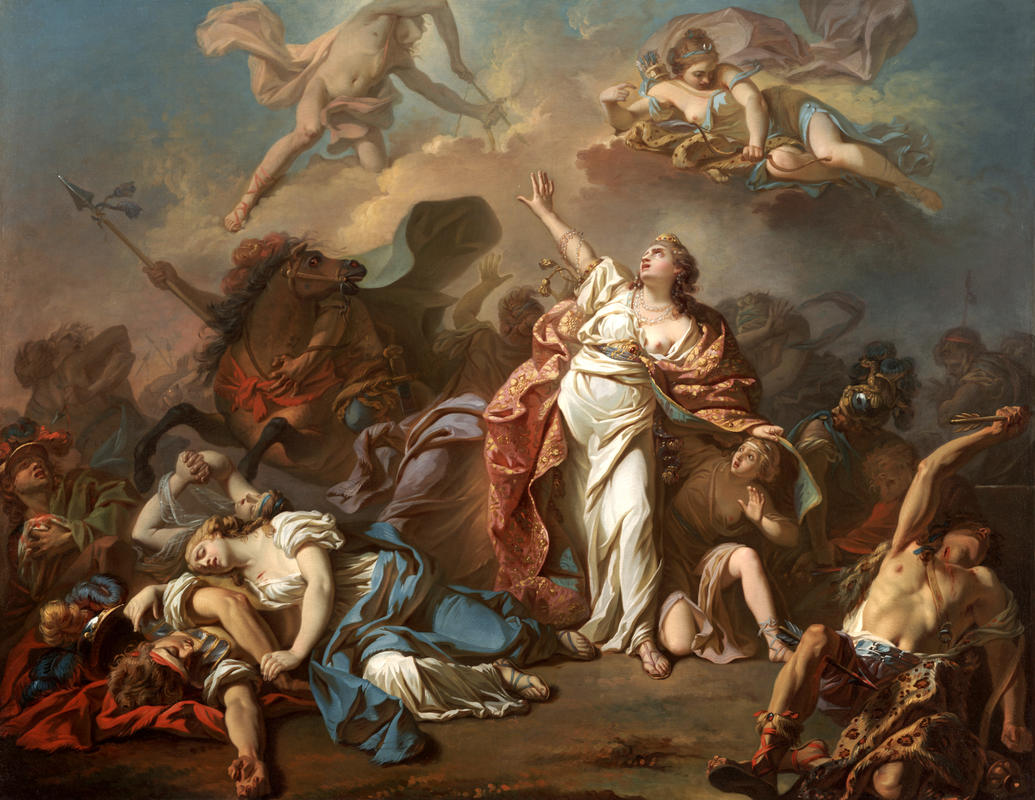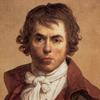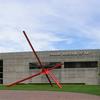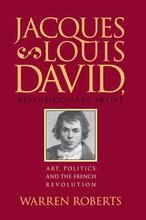More about Apollo and Diana Attacking the Children of Niobe
- All
- Info
- Shop

Contributor
Apollo and Diana Attacking the Children of Niobe loses a contest, David goes on hunger strike out of spite.
Jacques-Louis David was the biggest spoilsport of 18th century Paris, and when Apollo and Diana Attacking the Children of Niobe failed to win him a certain special scholarship, he didn’t take the news well. This painting was David’s second entry to win the Prix de Rome, and he had apparently deemed himself deserving of the honor. Unfortunately, the ignorant judges failed to grasp the extent of David’s tortured genius.
When he missed out on a free vacation to Rome and a hefty scholarship, the moody youth protested with a brief hunger strike. Thankfully, a peer convinced David not to starve himself, ending his remarkable display of poor sportsmanship. Europe did not lose this future ally of Robespierre (David would be big on the guillotine) and the Neoclassical master persisted in freeing France from the dreadful grips of Rococo.
Eventually, this tragic tableau would be owned by Andry, King Louis XVI's doctor. Ironically, as a Jacobin and member of the National Convention, David voted to execute the very same king in 1792. Although it’s certainly not as subversive a painting as The Death of Marat, it is a bit suspicious Andry decorated his house with art by a radical who helped kill his employer.
David clearly had a penchant for the dramatic, and this work delivers. The queen Niobe of Thebes powerlessly shields her children from gods Apollo and Diana, who murder them all in front of their mother. Niobe's fatal flaw is pride: she has insulted the fertility of the gods' mother Latona, boasting of her own fourteen children. In a particularly gruesome twist of poetic justice, Diana kills Niobe's daughters while her brother Apollo kills her sons. Legend has it Niobe met her own tragic end, going on to weep eternally as a rock atop Mount Sipylus.
Given the punishment, Niobe's decision to insult Latona seems ill-advised. As proud as she must have been (childbirth fourteen times over is no easy feat!) did she have to slight the mother of two vengeful, bloodthirsty deities? Perhaps, had she lived in our modern age, Niobe would have been an adrenaline junkie. Does taunting belligerent immortals count as an extreme sport? Regardless of Niobe’s intentions, Jacques-Louis David could have learned a thing or two about hubris while painting her plight.
Sources
- "Apollo and Diana Attacking the Children of Niobe." Dallas Museum of Art. 2017. Accessed May 22, 2017. https://www.dma.org/collection/artwork/jacques-louis-david/apollo-and-d….
- "DMA Acquires New Painting In Honor of Outgoing Senior Curator Dorothy Kosinski." Dallas Museum of Art. February 25, 2008. Accessed May 22, 2017. https://www.dma.org/press-release/dma-acquires-new-painting-honor-outgo….
- The Editors of Encyclopædia Britannica. "Niobe." Encyclopedia Britannica. Accessed May 22, 2017. https://www.britannica.com/topic/Niobe-Greek-mythology.
- McMullen, Roy Donald. "Jacques-Louis David." Encyclopedia Britannica. Accessed May 22, 2017. https://www.britannica.com/biography/Jacques-Louis-David-French-painter.
Featured Content
Here is what Wikipedia says about Diana and Apollo Killing Niobe's Children
Diana and Apollo Killing Niobe's Children is a 1772 oil-on-canvas painting by the French artist Jacques-Louis David, now in the Dallas Museum of Art. He produced it to compete for the Prix de Rome. In the Rococo style which marked his early period, it was emblematic of the conflict between David and the Académie royale de peinture et de sculpture jury, which refused him the prize following a pre-arranged vote.
Check out the full Wikipedia article about Diana and Apollo Killing Niobe's Children














I love that story Ovid wrote in his Metamorphoses book if I am not mistaken. It is such an interesting story with such a unique conflict in it.